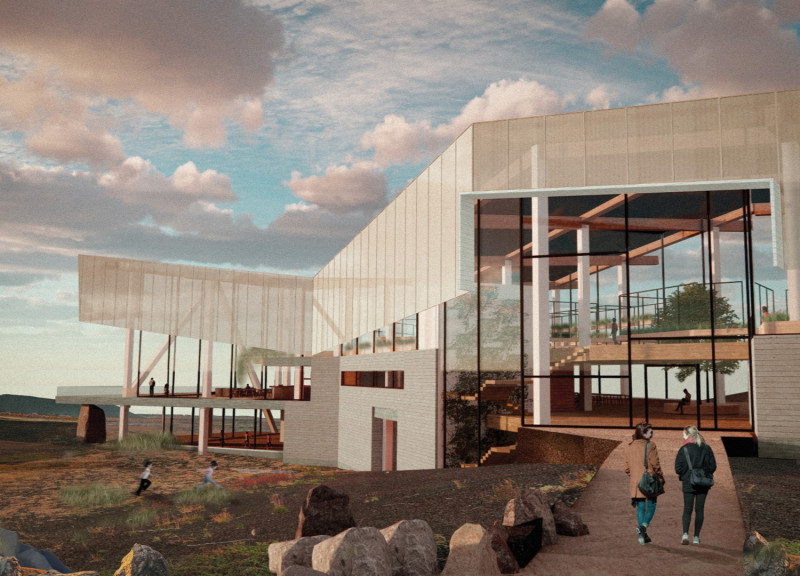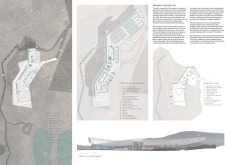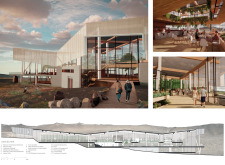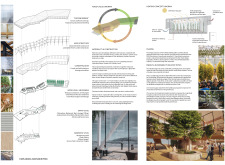5 key facts about this project
Functionally, the restaurant operates as an establishment that not only caters to visitors but also embraces innovative greenhouse practices. The core idea is to provide diners with access to fresh ingredients sourced directly from its adjoining greenhouse, reinforcing a farm-to-table philosophy. This not only enhances the quality of food but also educates visitors on sustainable agriculture. The spatial arrangement is carefully considered, with open dining areas boasting extensive glass facades that foster a visual connection to the surrounding landscape. These large windows maximize natural light and offer panoramic views, creating an elevated dining experience that encourages patrons to engage with nature.
All key elements of the project contribute to its overall coherence. The layout includes distinct zones such as the main dining area, greenhouses, and terraces, which are designed to facilitate both intimate gatherings and larger events. The use of transparent materials like glass and translucent polycarbonate sheeting allows for light to permeate the interior, while also emphasizing the visual flow between outdoor and indoor spaces. The underlying structure employs galvanized steel columns and laminated veneer lumber for a durable yet lightweight frame, ensuring stability while minimizing environmental impact.
What sets this design apart is its unique approach to materiality and environmental integration. Natural materials such as timber, concrete, and indigenous stone are utilized to harmonize the building with its surroundings. This careful selection ensures that the restaurant not only complements the local ambiance but also stands resilient against the harsh Icelandic climate. The project integrates passive heating strategies and geothermal systems, emphasizing energy efficiency throughout its operation. Vertical gardens have been thoughtfully incorporated into the design, enhancing both aesthetics and air quality while promoting biodiversity.
In terms of unique design approaches, the project incorporates elements that resonate with its geographical context. The architectural form mimics the "frozen ribbon" concept, creating a fluid, dynamic silhouette that reflects the natural topography of the land. This design choice not only enhances the building's visual appeal but actively contributes to the user experience by enhancing vistas and integrating nature into the hospitality sector.
The restaurant's presence is further fortified by its commitment to sustainability. By embedding agricultural practices within the restaurant's operational framework, it promotes an awareness of food production and environmental stewardship among its patrons. The careful craftsmanship visible in the design underscores the relevance of sustainability in modern architecture.
This Iceland Greenhouse Restaurant project stands as a contemporary example of how architecture can effectively merge dining, agriculture, and ecology. Its innovative design serves as a model for future projects aiming to achieve enhanced sustainability while providing a unique experience to users. For more information and insights, including architectural plans, sections, and designs, readers areencouraged to explore the comprehensive presentation of the project. Engaging with these architectural ideas affords a deeper understanding of this notable endeavor and its broader implications for future developments in the field of sustainable architecture.


























